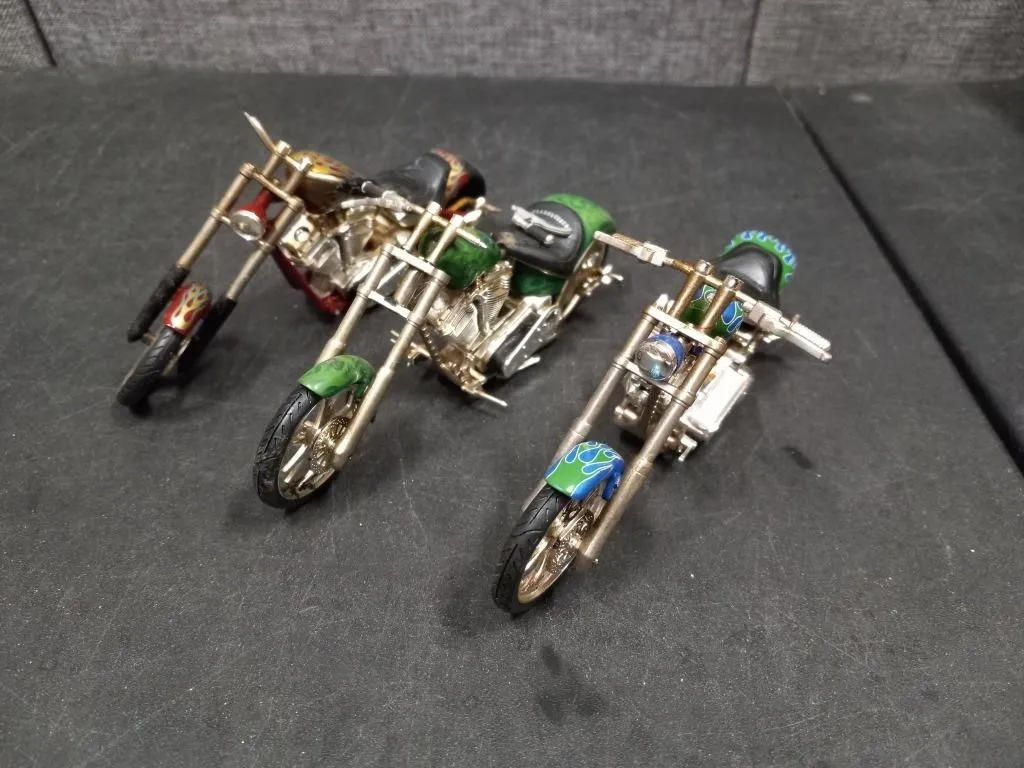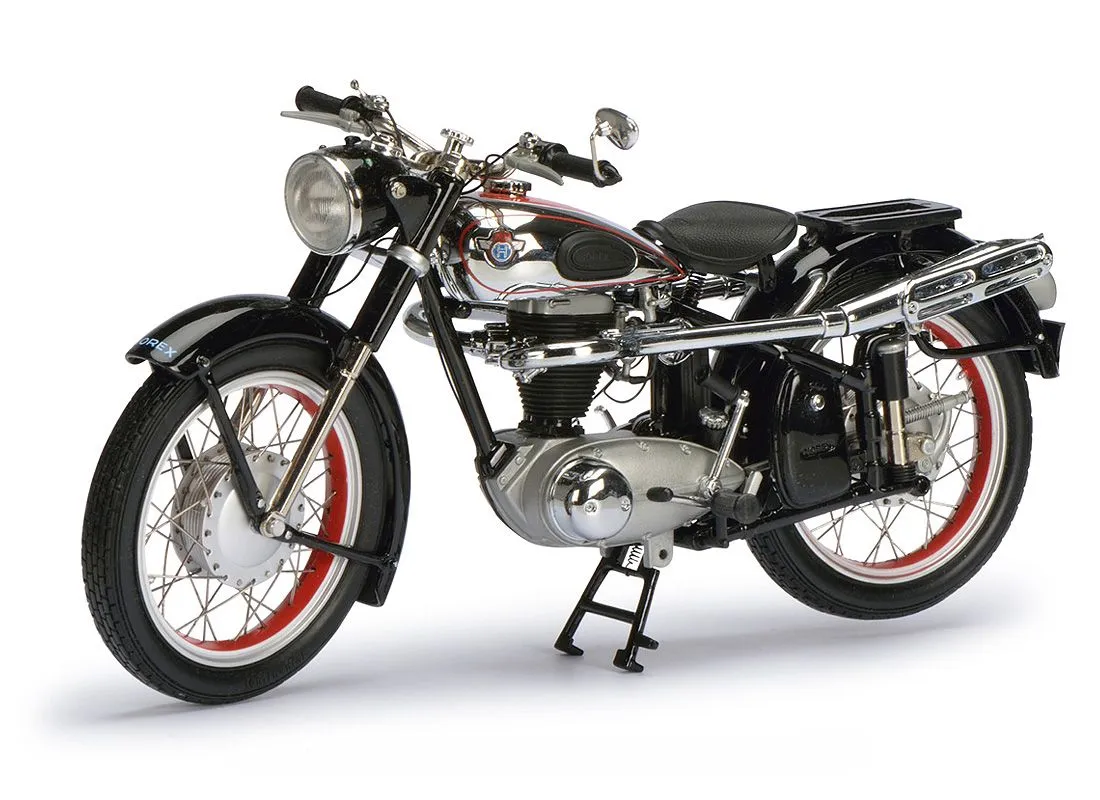What are Diecast Vintage Motorcycles
Diecast vintage motorcycles are miniature replicas of classic and iconic motorcycles, crafted using the die-casting process. This involves injecting molten metal, typically zinc alloys, into molds to create highly detailed and durable models. These collectibles have captivated enthusiasts for generations, offering a tangible connection to motorcycle history and design. They provide a way for collectors to own a piece of history, appreciating the artistry and engineering of legendary bikes in a compact, affordable form. The appeal spans across age groups, uniting people with a shared passion for motorcycles and the nostalgia they evoke.
History and Evolution
The history of diecast motorcycles mirrors the evolution of the die-casting industry itself. Early examples emerged in the mid-20th century, initially as toys but quickly evolved into more sophisticated collectibles. Early models were often simpler in design, but as technology advanced, so did the detail and accuracy of the models. Companies like Dinky Toys, Corgi, and others pioneered the production of these miniatures, introducing a wide array of motorcycle models that captured the spirit of their full-sized counterparts. Today, the market is diverse, with manufacturers continuously pushing the boundaries of detail and realism, from the paint finish to the smallest components.
Materials and Manufacturing

Diecast motorcycles are primarily made using a die-casting process, where molten metal, usually a zinc alloy, is injected into steel molds under high pressure. This process allows for intricate details to be replicated accurately. The molds themselves are meticulously crafted, often using computer-aided design (CAD) to ensure precision. The die-casting process creates a solid base for the model, which is then often followed by painting, detailing, and assembly. Plastics and rubber are also used for tires, seats, and other parts to enhance realism. The quality of the materials and the skill of the manufacturing process directly influence the value and collectibility of the model.
Popular Scales for Diecast Motorcycles
Diecast motorcycle models are available in various scales, each offering a different balance of detail, size, and display options. The most common scales include 1:12, 1:18, and 1:24, each referring to the ratio of the model’s size to the real motorcycle’s size. 1:12 scale models are often highly detailed and suitable for collectors seeking a more substantial display piece. The 1:18 scale is a popular choice, offering a good balance of detail and size. Models in this scale are often easier to find and are compatible with many display cases. Smaller scales, such as 1:24, are often used for more affordable or toy-oriented models. The choice of scale depends on personal preference, available space, and collecting goals.
Top 7 Facts about Diecast Motorcycles
Fact 1 Rarity and Value

The value of a diecast motorcycle is often determined by its rarity. Limited-edition models, those produced in small quantities, or those with unique features often command higher prices. The condition of the model is another critical factor; mint-condition models, especially those with their original packaging, are highly sought after. Demand for a particular model, historical significance, and the manufacturer also impact value. Certain models from specific manufacturers or representing iconic motorcycles are more valuable due to their historical importance and popularity among collectors. Careful research and understanding the market trends are essential for any collector hoping to build a valuable collection.
Fact 2 Iconic Motorcycle Models
Many diecast motorcycle models replicate iconic motorcycles that have left their mark on the history of motorcycling. These include legendary brands and models like the Harley-Davidson Knucklehead, the Triumph Bonneville, the BSA Gold Star, the Vincent Black Shadow, and the Norton Manx. These models are prized by collectors because they represent significant moments in motorcycle history. The manufacturers often strive to recreate the exact features, from the engine details to the paint colors, capturing the essence of these legendary bikes. Owning a diecast model of an iconic motorcycle allows enthusiasts to celebrate the design and engineering of these classics.
Fact 3 Detail and Craftsmanship
The level of detail and craftsmanship in diecast motorcycles is a significant factor in their appeal. Manufacturers use advanced techniques to accurately replicate every aspect of the original motorcycle. This can include detailed engine components, working suspension systems, realistic paint finishes, and accurate decals. High-end models often feature individual parts, such as brake lines, sprockets, and even tiny screws, adding to the overall realism. The quality of materials, such as the use of metal, rubber, and high-quality plastics, also contributes to the model’s look and feel. This attention to detail transforms these miniatures into works of art, making them highly desirable for collectors.
Fact 4 Collecting Communities

Diecast motorcycle collecting has a strong community aspect. Enthusiasts worldwide connect through online forums, social media groups, and local clubs. These communities offer opportunities to share knowledge, showcase collections, buy, sell, and trade models. Events, such as diecast shows and swap meets, are common, where collectors can meet, discuss their passion, and find rare models. This sense of community adds to the enjoyment of collecting, offering support, camaraderie, and opportunities to learn more about the hobby. For many collectors, the community is as important as the models themselves.
Fact 5 Storage and Display
Proper storage and display are essential for preserving and showcasing diecast motorcycles. Models should be kept in a clean, dry, and dust-free environment. Direct sunlight should be avoided, as it can fade the paint and damage the decals. Many collectors use display cases, which protect the models from dust and accidental damage while allowing them to be easily viewed. Careful handling is also important; models should be handled with clean hands to avoid leaving fingerprints or smudges. Regular cleaning with a soft cloth is recommended to remove dust and keep the models in excellent condition. Protecting your collection ensures the value is maintained over time.
Fact 6 Restoration Potential
Some collectors specialize in restoring diecast motorcycles, bringing older or damaged models back to their former glory. Restoration projects can range from minor repairs, such as replacing missing parts or fixing paint chips, to more extensive work, including complete disassembly, repainting, and rebuilding. The value of a restored model often depends on the quality of the restoration work and the rarity of the model. Restoration is a skill that requires patience, attention to detail, and a knowledge of the materials and techniques used in the original manufacturing process. Successfully restoring a model can significantly increase its value and the satisfaction of the collector.
Fact 7 Investment Potential

Diecast motorcycles can be a sound investment for collectors. The value of certain models increases over time, especially limited editions, vintage models, and those in mint condition. Market trends, rarity, and historical significance play a significant role in determining investment potential. Thorough research is essential; understanding the market, identifying rare models, and knowing the history of specific manufacturers are crucial for making informed investment decisions. While collecting should primarily be driven by passion, the potential for financial gain is an added benefit for many collectors. However, like any investment, the value of diecast motorcycles can fluctuate, and it’s important to be aware of market risks.
How to Start a Diecast Motorcycle Collection
Research and Education
Starting a diecast motorcycle collection begins with research. Learn about different brands, models, scales, and eras. Explore online resources, such as collector forums, websites, and social media groups. Educate yourself on the value of specific models, what to look for in terms of condition, and common collecting terms. Understanding the market is key to making informed purchasing decisions and avoiding costly mistakes. Read books, visit museums, and connect with other collectors to expand your knowledge. The more you know, the better equipped you will be to build a collection that you enjoy and that may appreciate in value.
Setting a Budget

Establishing a budget is a crucial step when starting a diecast motorcycle collection. Determine how much you are willing to spend on individual models and overall. Set realistic financial goals based on your income and collecting aspirations. It is easy to get carried away, so sticking to a budget will help you avoid overspending and maintain financial control. There are diecast motorcycles available at various price points, from affordable toy-grade models to high-end, investment-grade pieces. A well-defined budget allows you to prioritize your purchases and stay focused on building a collection that aligns with your financial capabilities.
Finding the Right Models
Finding the right diecast motorcycle models involves several strategies. Start by exploring online marketplaces, such as eBay, dedicated diecast model websites, and collector forums. Visit local antique shops, toy stores, and swap meets. Consider attending diecast shows and events to meet other collectors and find rare models. Look for models that appeal to your personal preferences, whether it is a specific motorcycle brand, model, or era. Check the model’s condition, paying close attention to any defects. Research the model’s value and authenticity before making a purchase. Building relationships with reputable sellers and collectors will help you access sought-after models and build a trustworthy collection.
Caring for Your Collection
Caring for your diecast motorcycle collection is essential for preserving the value and enjoyment of your models. Store your models in a clean, dry, and dust-free environment. Protect them from direct sunlight and extreme temperatures, which can damage the paint and materials. Handle your models carefully, and avoid touching them with dirty hands. Consider using display cases to showcase your collection and protect them from dust and damage. Regularly inspect your models for any signs of wear, and take steps to address any issues promptly. By taking care of your collection, you will ensure that your models remain in excellent condition for years to come, allowing you to fully appreciate the beauty and craftsmanship of each piece. Maintaining the value and your passion for the hobby is key to a successful collection.
